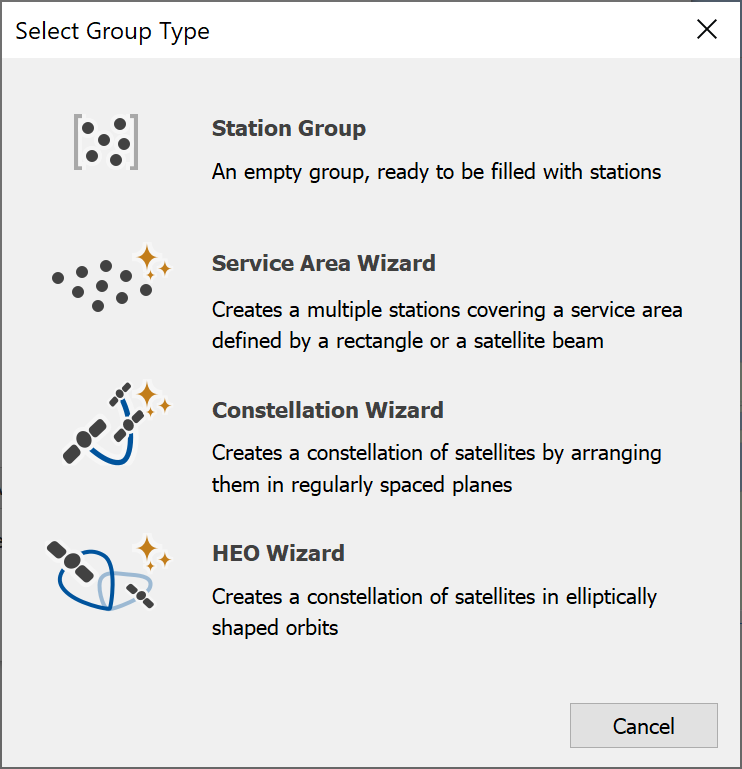Station Groups
Station Groups are introduced in Visualyse Professional to make large simulations more manageable and understandable.
They also have associated ‘Wizards’ that allow for simpler creation of multiple identical stations based on a few parameters – for example you can make large constellations of identical satellites, or thousands of test point stations in defined service area.
As a general tip, it is better to manage Stations through Groups rather than directly through the Station List. The Station List can become very large, even in relatively simple scenarios
Stations in Visualyse can be collected into Groups. Stations in a Group may or may not be connected for interference calculation purposes. Groups can be used simply as aids to organising and analysing data.
A Station can be in more than one Group at the same time. Station Groups are treated as subsets of the complete Station List.
Visualyse Professional includes four methods for creating Station Groups, each of which is now briefly discussed. Detailed descriptions of each type are given in the subsequent sections.

Station Group - Create Empty
Empty groups can be created and Stations can be added to it from the list of all Stations within the simulation. Even if Stations are being created individually it can be useful to assign them to a Group – for example to manage simulations by collecting like Stations together.
This also allows groupings of Stations that are not related in any of the ways assumed by the other Groups.
For example, satellite constellations that do not have the symmetries assumed by the Constellation Wizard are not excluded in Visualyse. The Constellation Wizard can be run several times to produce single planes of satellites with differing orbital parameters. Then, by creating and editing an empty Group it is possible to put all the planes into the same group and create a new constellation.
Mixed GSO/nonGSO constellations can be created in a similar way.
Constellation Wizard
The Constellation Wizard creates a Group of identical Stations in a nonGSO constellation with certain symmetry properties. Stations are assumed to orbit in equally spaced planes and to be equally spaced around each plane. You can also use the Constellation Wizard to import two-line element sets (TLEs).
Service Area Wizard
The Service Area Wizard creates multiple Stations in or on the boundary of a geographical area defined by latitude/longitude limits, or by the footprint of a selected antenna
HEO Wizard
The HEO Wizard allows you to define constellations of HEO satellites in several useful orbit configurations.
Re-running the Wizards
In certain circumstances Wizards can be re-run in order to modify the Station Group. You need to be aware of the knock-on effect that this can gave on the rest of your simulation. The first thing that re-running a Station Wizard does is delete the existing station in the group to be re-defined – and this results in any Links that use those stations becoming un-defined. You will need to fix the affected links.